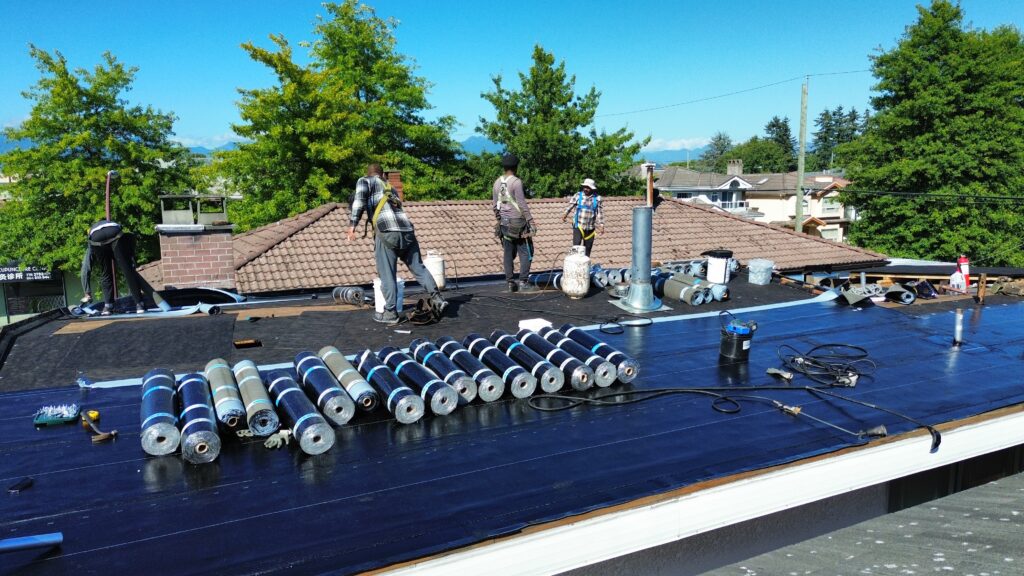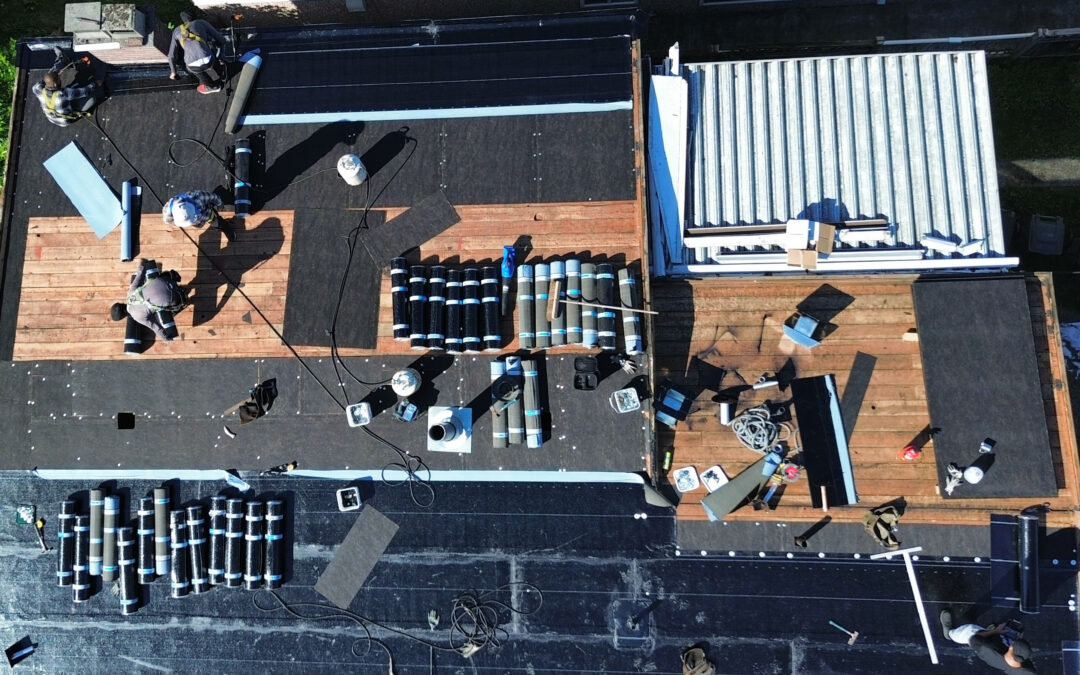Living by the ocean in Tsawwassen offers breathtaking views and fresh coastal breezes. But it also brings special challenges when it comes to protecting your home—especially your roof. Choosing the right roofing material can make a big difference in how well your home stands up to salt, moisture, and strong winds.
In this guide, we’ll walk you through the best roof material types for ocean-side living, ensuring your residential roofing investment lasts for years to come.
Why Choosing the Right Roofing Material Matters for Ocean-Side Homes
Homes near the ocean deal with more intense conditions than inland properties. Salt carried by the wind can cause metal to rust faster, shingles to degrade, and roofing structures to weaken over time. Humidity and frequent storms only add to the wear and tear.
Without the right roofing material, your roof may need costly repairs much sooner than expected. Whether you’re maintaining residential roofing or looking after commercial roofs in Tsawwassen, material choice is critical for durability and peace of mind.
Coastal buildings face harsher conditions due to high moisture levels, salt exposure, and strong winds. For long-term performance, it’s important to choose corrosion-resistant materials and designs that can handle the demands of a coastal environment.
If you’re unsure about which roofing material works best for your specific location, consulting a roofing professional familiar with coastal homes can make a major difference.
7 Best Roofing Materials for Ocean-Side Homes
Here’s a closer look at the top roof material types that can handle Tsawwassen’s coastal conditions.
1. Metal Roofing
Metal roofs are a smart choice for ocean-side homes. With protective coatings, they resist rust and corrosion even in salty air. Metal is also lightweight and can withstand strong winds, making it ideal for both residential roofing and commercial roofs in Tsawwassen.
Among all roof material types, metal roofing offers one of the longest lifespans, often lasting 40–70 years with proper care. It’s a roofing material known for combining strength and energy efficiency.
2. Slate Roofing
Slate is a natural roofing material that stands strong against salt, moisture, and heavy winds. It’s incredibly durable, sometimes lasting over 100 years. Though heavier and more expensive, it’s a great investment for long-term protection.
Slate is especially good for homeowners who want a traditional, elegant look while also prioritizing durability.
3. Clay and Concrete Tiles
Clay and concrete tiles are heavy, which helps them stay put during high coastal winds. They are also very resistant to salt damage. These tiles are a popular roofing material choice in many coastal communities.
While heavier, their ability to resist coastal wear and retain their color over time makes them worth considering for residential roofing projects.
4. Synthetic Roofing Materials
Modern synthetic materials are designed to mimic slate, wood, or tile but offer better resistance to salt and water damage. They are lightweight and require less maintenance compared to natural materials.
Synthetic roofing material options often come with strong warranties and offer a budget-friendly alternative for ocean-side living.
If you’re aiming for a cost-effective roofing material that still delivers style and performance, synthetic options are a smart pick.
5. Cedar Shake Roofing (With Proper Treatment)
There’s just something about cedar shakes that feels right at home by the ocean. They offer a warm, rustic charm that really suits coastal living. But here’s the thing — if cedar isn’t properly treated, salty air and high moisture can wear it down fast. With the right treatments, though, cedar can become a strong, long-lasting roofing material, able to resist moisture, pests, and salt damage.
If you love the natural, earthy look of wood and you’re ready to keep up with regular maintenance, treated cedar shakes could be a beautiful choice for residential roofing. Just keep in mind: even treated cedar can still have issues like warping if it’s not installed or maintained the right way. (If you want to dig deeper, check out this helpful guide on what causes cedar shake warping and how to avoid it!)
6. Asphalt Shingles (Coastal Grade)
While regular asphalt shingles might struggle by the coast, there’s good news — coastal-grade asphalt shingles are built to handle salty, humid conditions. They’re engineered to last longer than standard versions, making them a more affordable yet durable roofing material option.
For many homeowners looking for budget-friendly roof material types in Tsawwassen, coastal-grade asphalt shingles are a smart and practical choice.
7. Standing Seam Metal Roofs
If you’re looking for something tough and stylish, standing seam metal roofs are worth a serious look. They’re like the upgraded version of traditional metal roofing — better at standing up to strong winds and heavy rain. Because of their strength and sleek design, standing seam metal roofs are highly recommended for commercial roofs in Tsawwassen and also for high-end residential roofing projects. They’re modern, durable, and built to handle everything ocean-side weather can throw at them.
Key Factors to Consider When Choosing a Roofing Material for Ocean-Side Homes
Before selecting a roofing material, consider these key factors:
- Salt Resistance: Materials must stand up to corrosion and humidity.
- Wind Resistance: The roof should stay secure during coastal storms.
- Maintenance Requirements: Some roof material types need more upkeep than others.
- Aesthetics: Choose a style that complements your home.
- Budget: Balance initial costs with long-term durability.
Experts from ASHRAE recommend focusing on material durability and proper design to prevent premature failures in coastal areas.
No matter which roofing material you choose, make sure it’s rated for coastal or high-wind areas to ensure maximum protection.
Residential Roofing vs. Commercial Roofs in Tsawwassen: Are the Needs Different?
While the coastal threats remain the same, the approach can differ slightly between residential roofing and commercial roofs in Tsawwassen.
- Residential roofs often focus on appearance as well as protection.
- Commercial roofs prioritize durability and functionality, sometimes requiring different roof material types like TPO or modified bitumen, especially for flat roof designs.
Understanding these differences ensures the best protection based on building type—and the right choice of roofing material.

Final Thoughts: Protect Your Tsawwassen Home with the Right Roofing Material
Living by the ocean is a dream for many Tsawwassen residents—but it demands the right choices when it comes to your roof. Selecting a roofing material that can handle salt, wind, and moisture is not just a smart move—it’s essential for protecting your investment.
Whether you choose metal, slate, synthetic, or specially treated wood, investing in high-quality roofing material ensures that your home remains safe, beautiful, and durable for years to come.
For more insights on protecting your coastal home, you can explore resources from the Canadian Construction Association (CCA).

